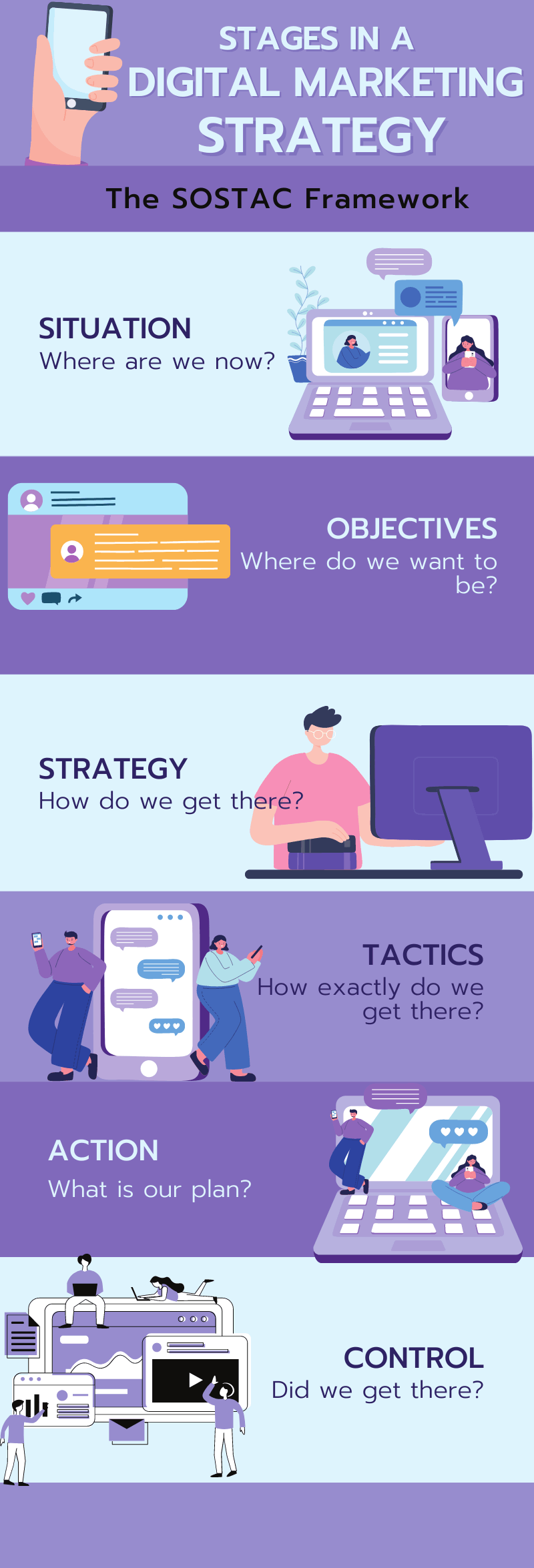
Stages in a Digital Marketing Strategy
The SOSTAC Framework is used to describe the stages in digital marketing campaigns. The framework is important as it gives vital structure to your strategy. It is possible to waste time and money without a proper plan. SOSTAC stands for situation, objectives, strategy, tactics, action, and control. This post will describe each stage in detail, giving a rundown on the framework and how it should be used.
Situation :
Performing a digital-specific SWOT analysis and reviewing the many facets of the business including consumers, competitors, and intermediaries, are among the planning activities engaged at this stage. A SWOT analysis seeks to identify the strengths, weaknesses, opportunities and threats involved in your business. This is the first stage in the framework as it is vital to know everything around your business, so you can focus on achieving your goals.
Objectives:
This includes a vision for where you want your business to be as a result of the digital marketing strategy. Specific goals for digital channels, such as sales volume predictions and cost reductions are examples of objectives these are called key performance indicators. All goals should be 'SMART': specific, measurable, actionable, relevant, and time-bound.
Strategy:
Strategy refers to how you intend to achieve the goals you've set. In the strategy section, you should also specify which market segments you want to target with your plan. If you are going to be offering some type of value to your audience this is when that should be decided, whether its a discount, e-book, free trial, or coupon. This is also a good time to take a look at what your competitors are doing, and see how you can differentiate your campaign.
Tactics:
The 7 Ps of the marketing mix include, product, price, place, promotion, people, process, and partnerships. These are essential elements to achieving your objectives and a checklist of key areas to focus on. This stage is where things are decided like what tools are you going to use to target and reach your target audience, what kind of content you are going to develop and how you are going to break down your budget.
Action:
This step involves taking action on your plan to work towards the objectives you have set. Different digital marketing strategies can include, search engine optimisation, pay-per-click, social media advertising, and email marketing. This is when you need to consider outsourcing work if not all the skills are available in-house. Timing is also a part of the action step, if your campaign is seasonal or if timing is important then that will be included in this step.
Control:
Control is the final stage where you measure and track how your campaign has done and compare the results to the objectives you set.
Each framework component is critical. It is critical that your goals are realistic, as some businesses create a plan based on this template and fill in some fantastic goals, but then fall short on how they will actually attain them. All components of the plan must be carefully constructed, and you must ensure that all of your components fit together well.